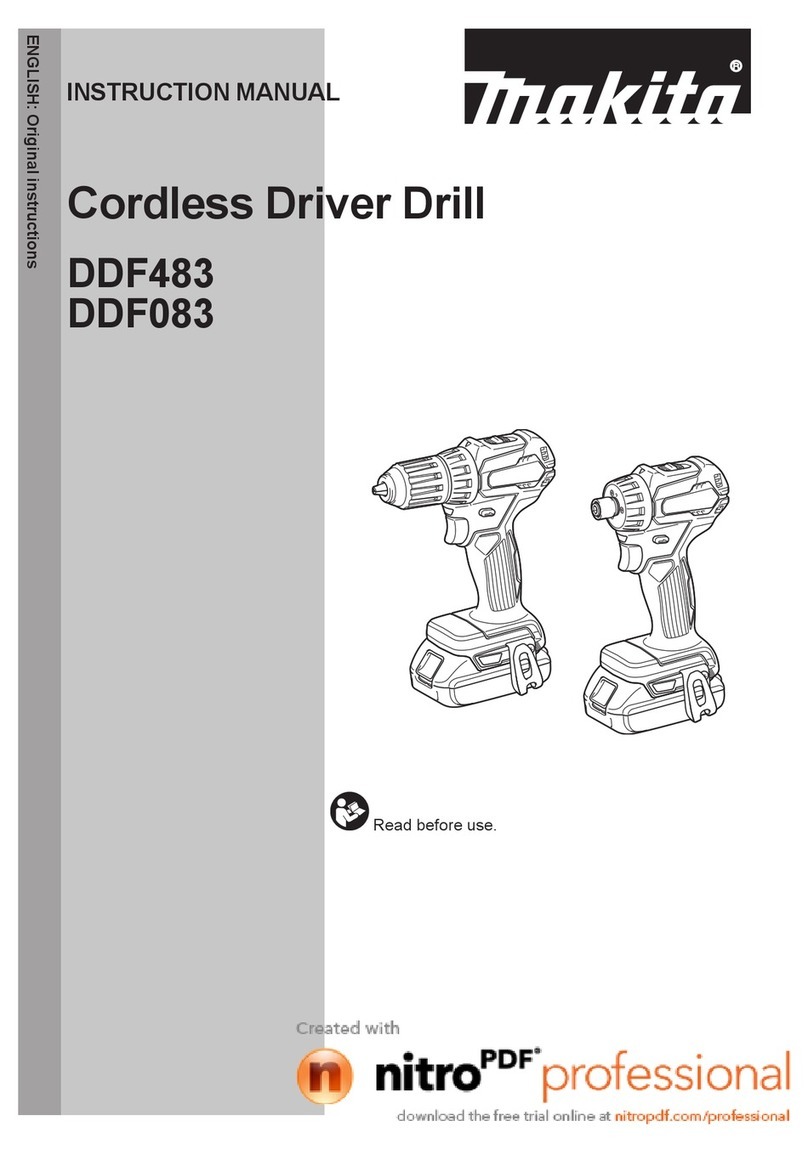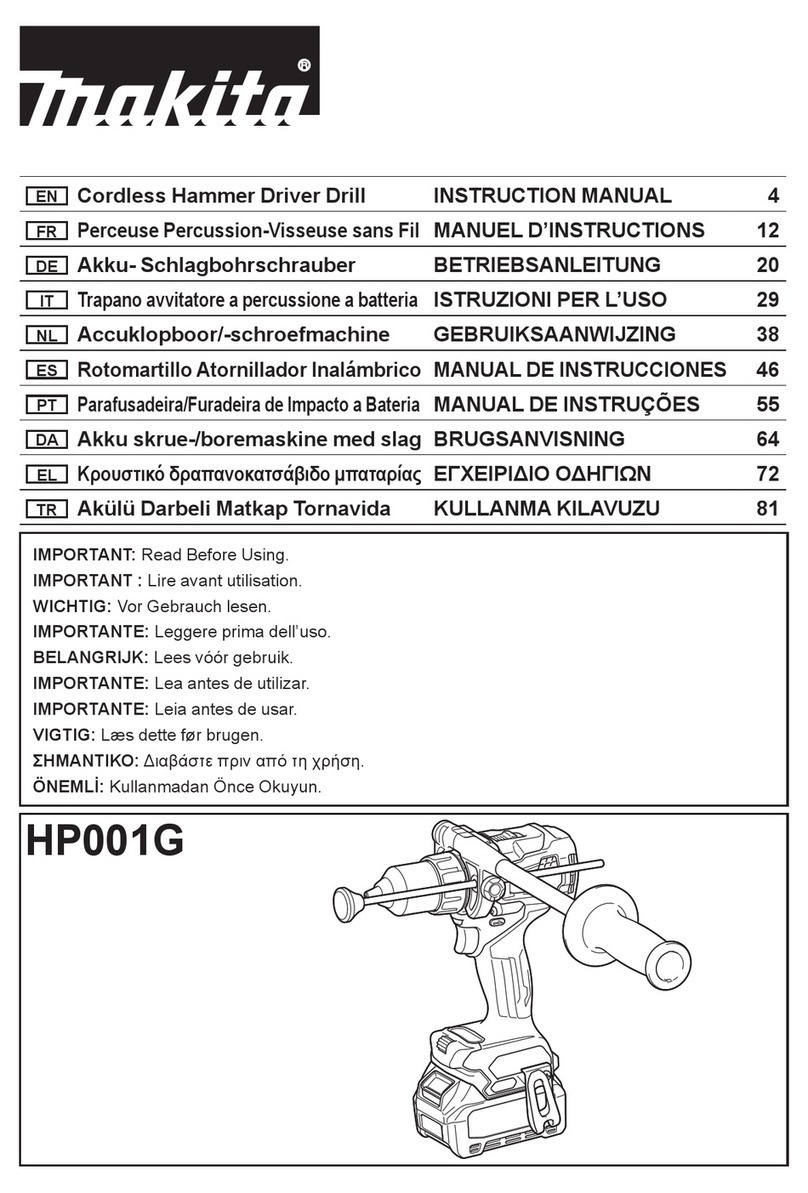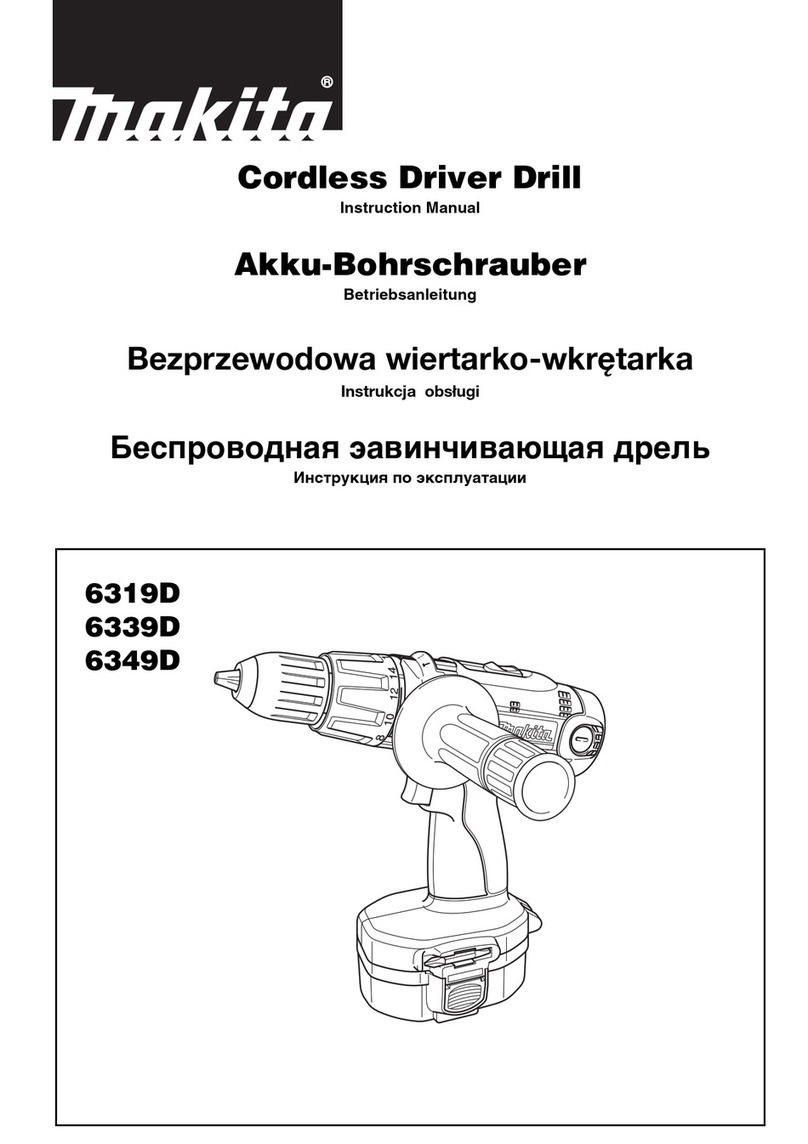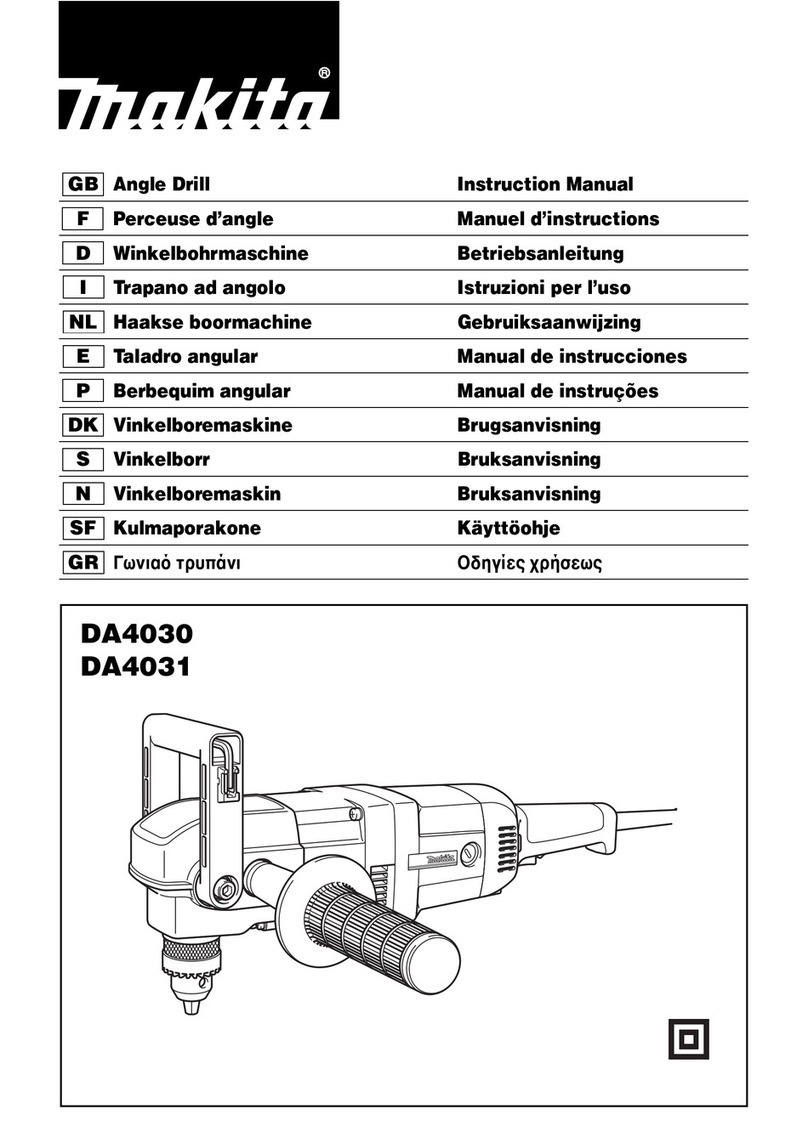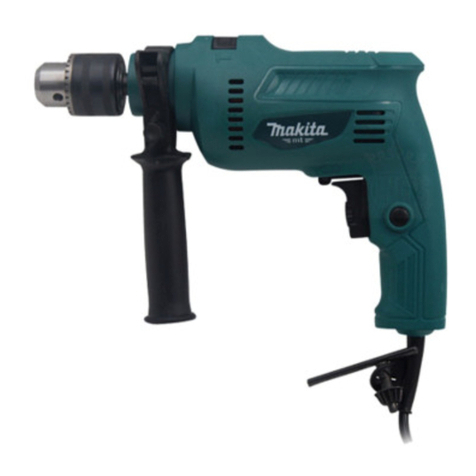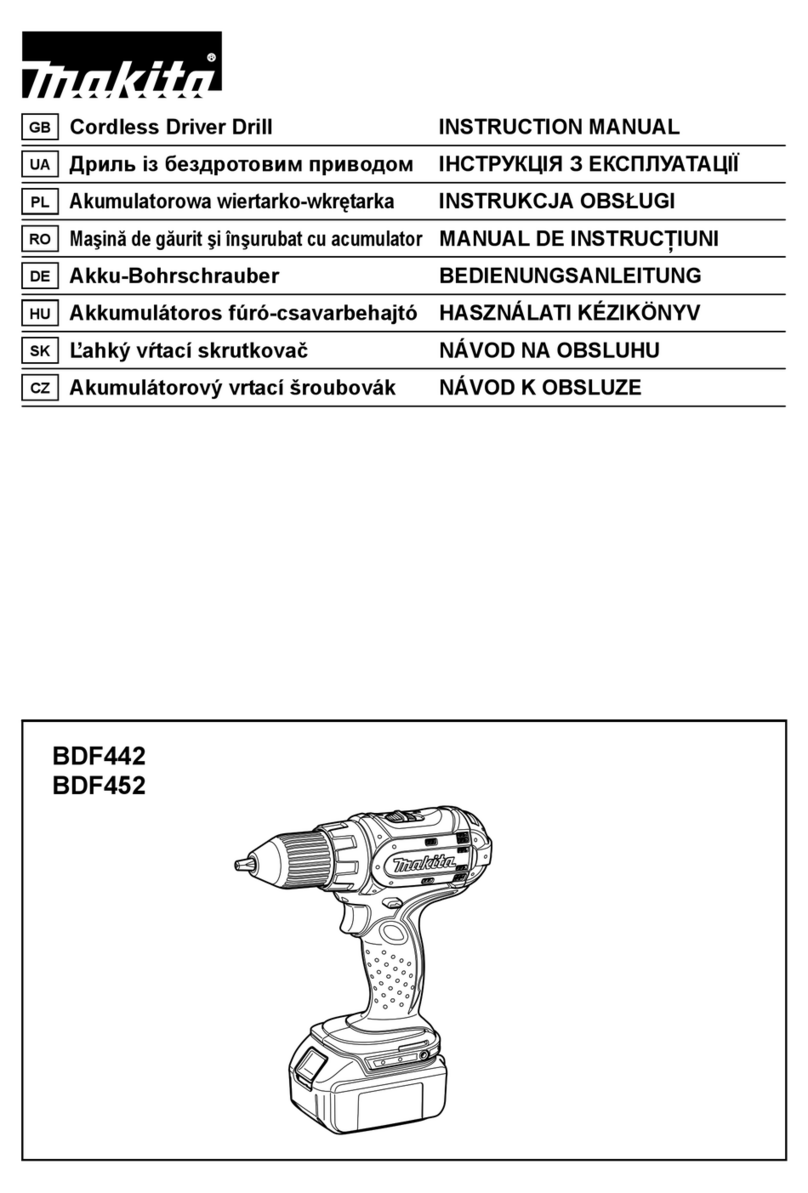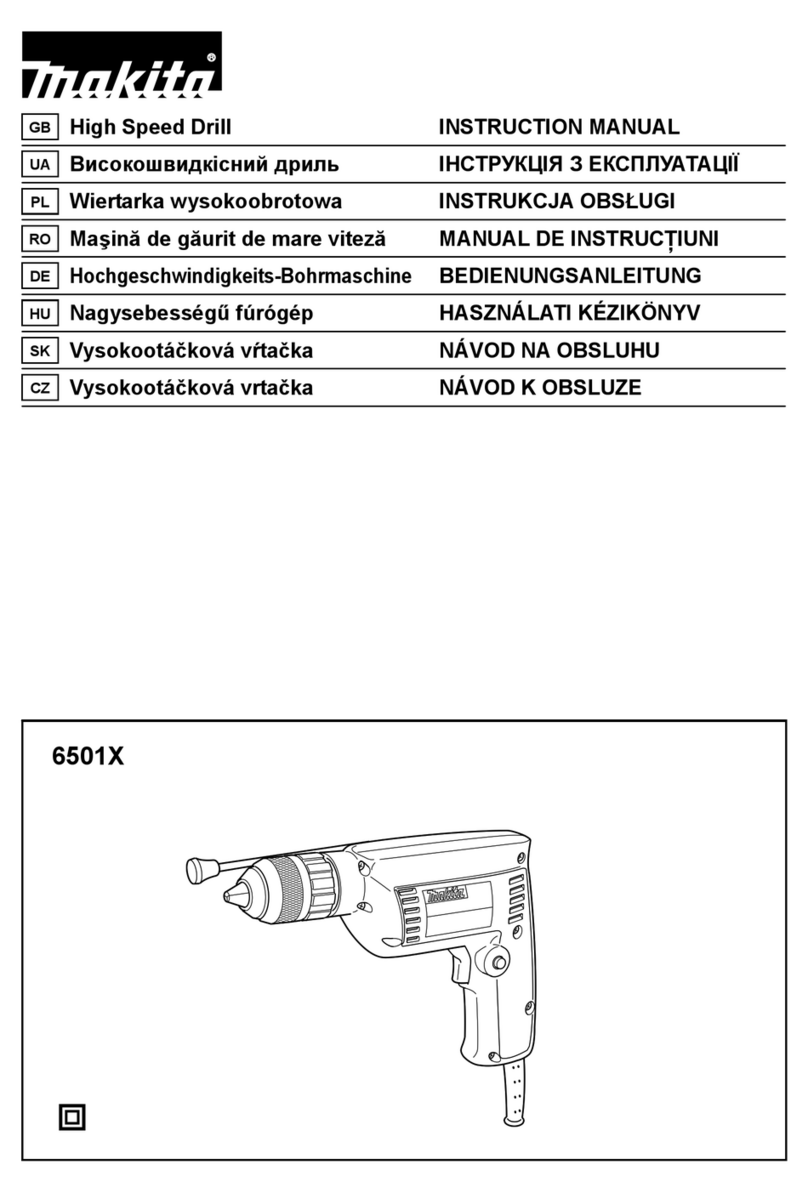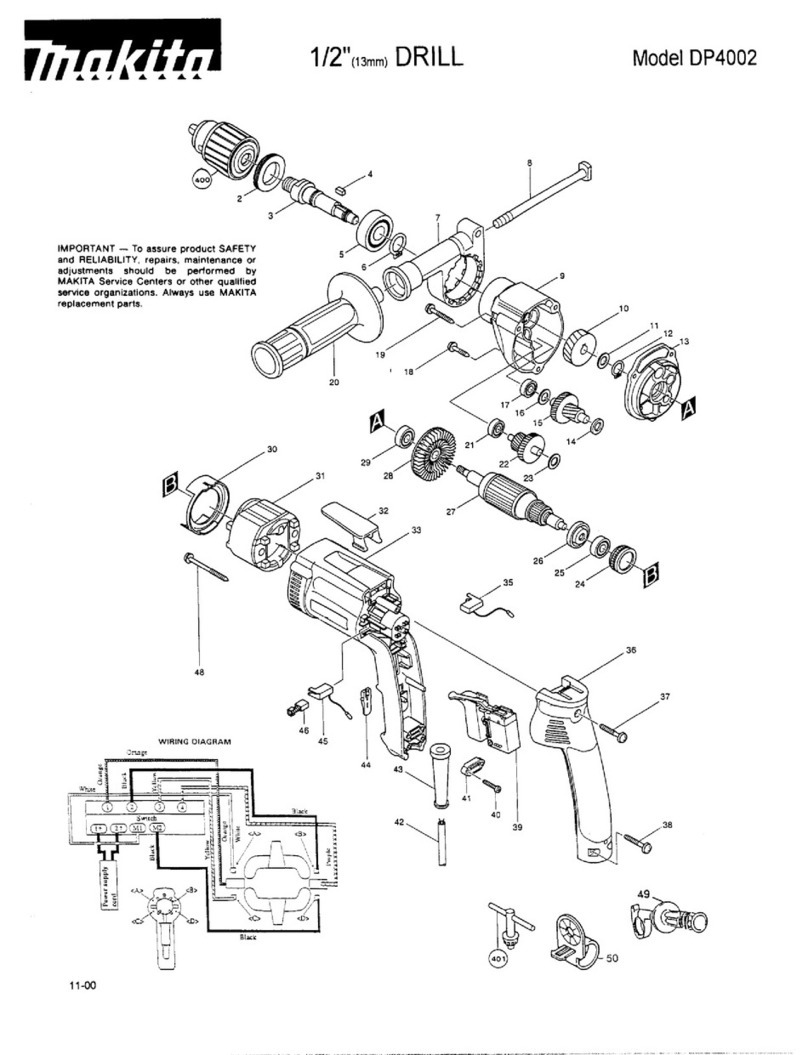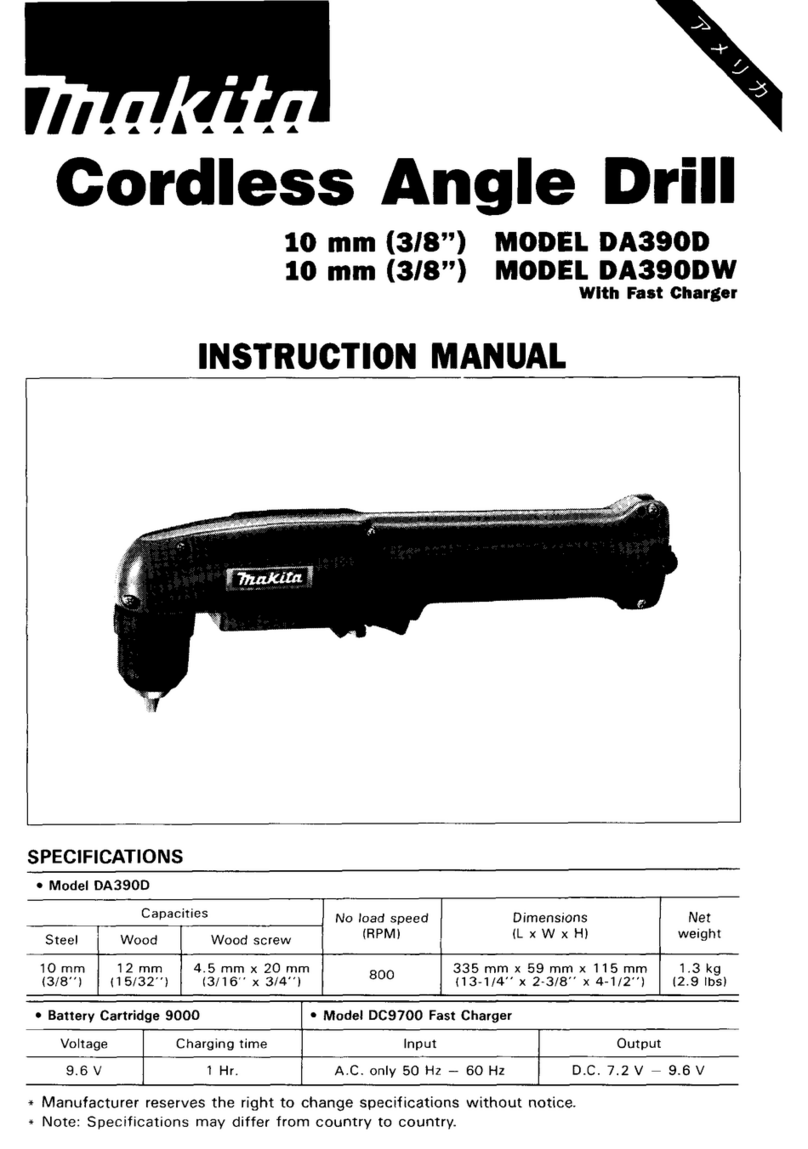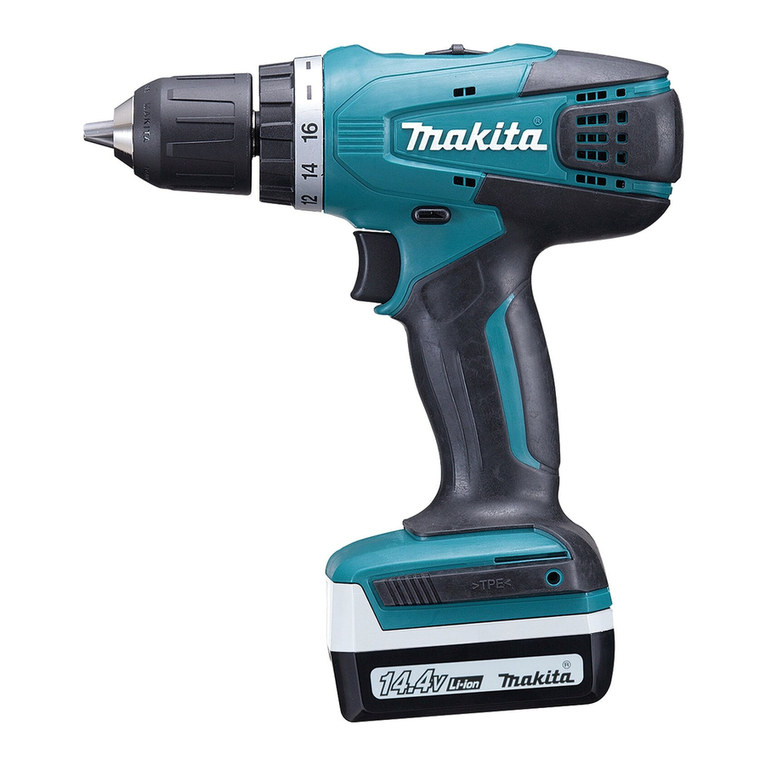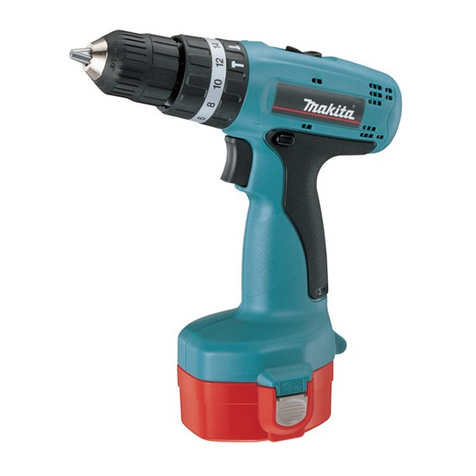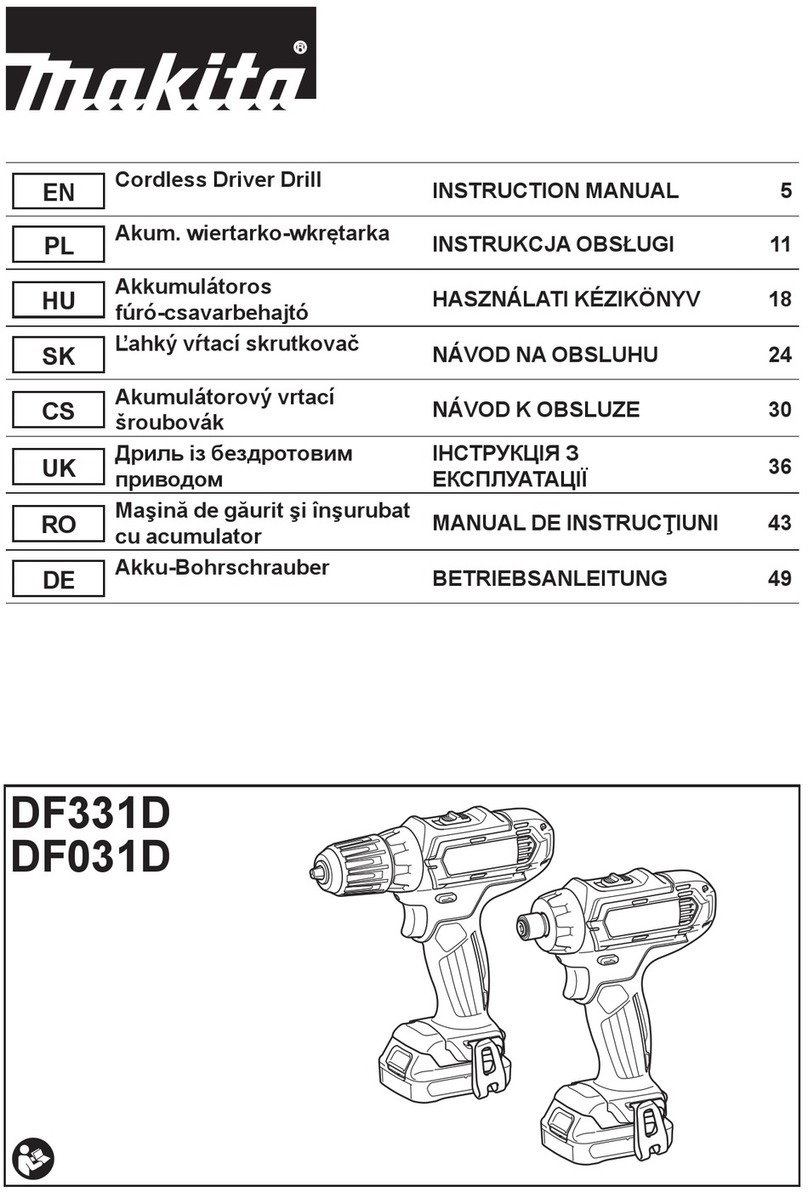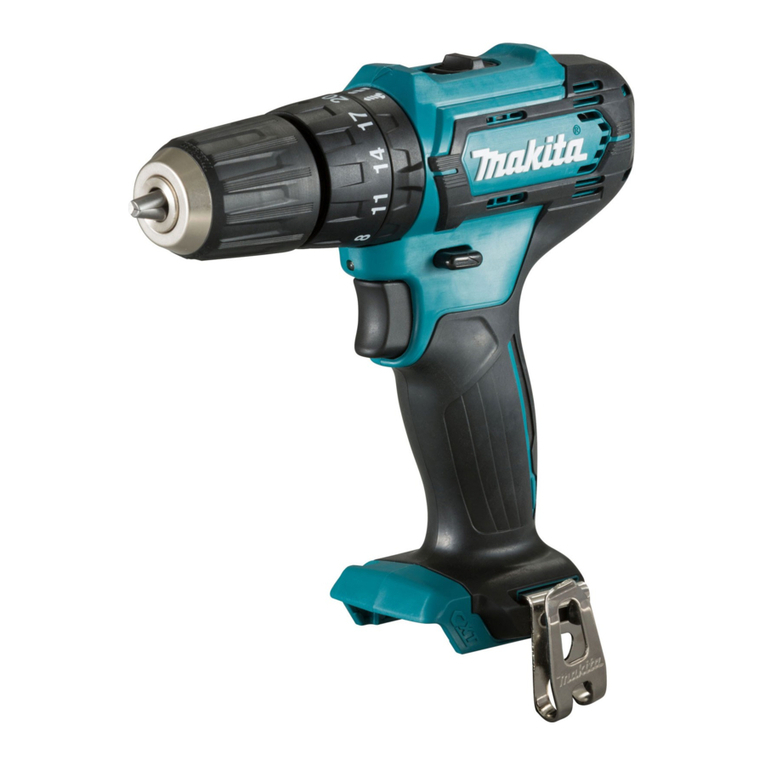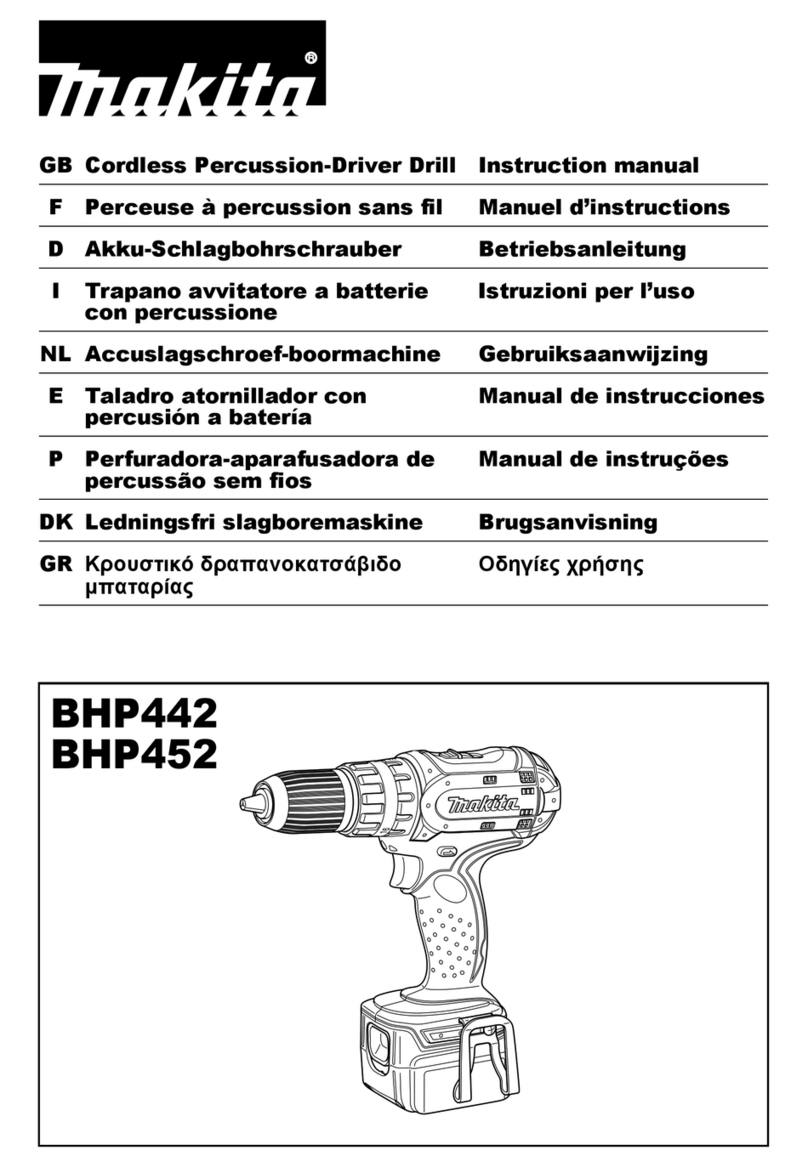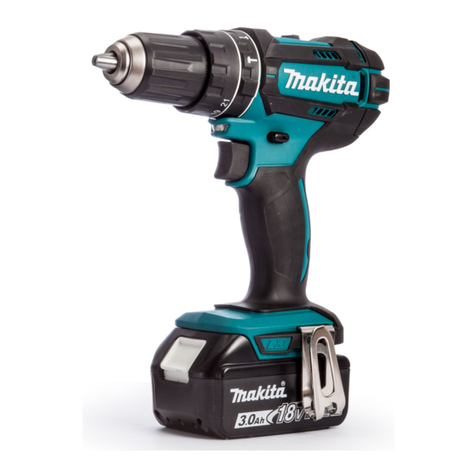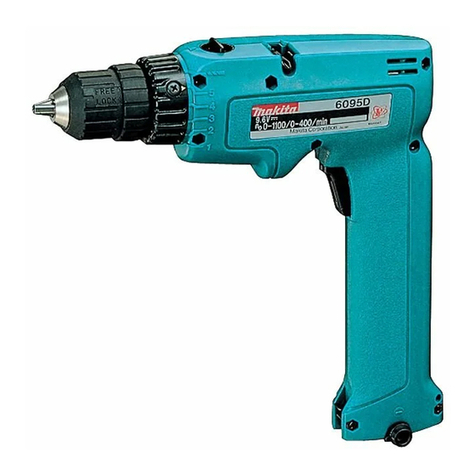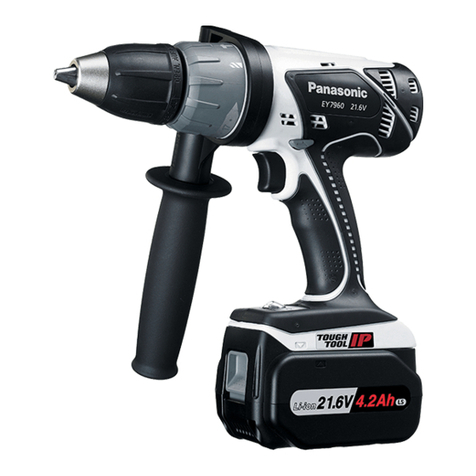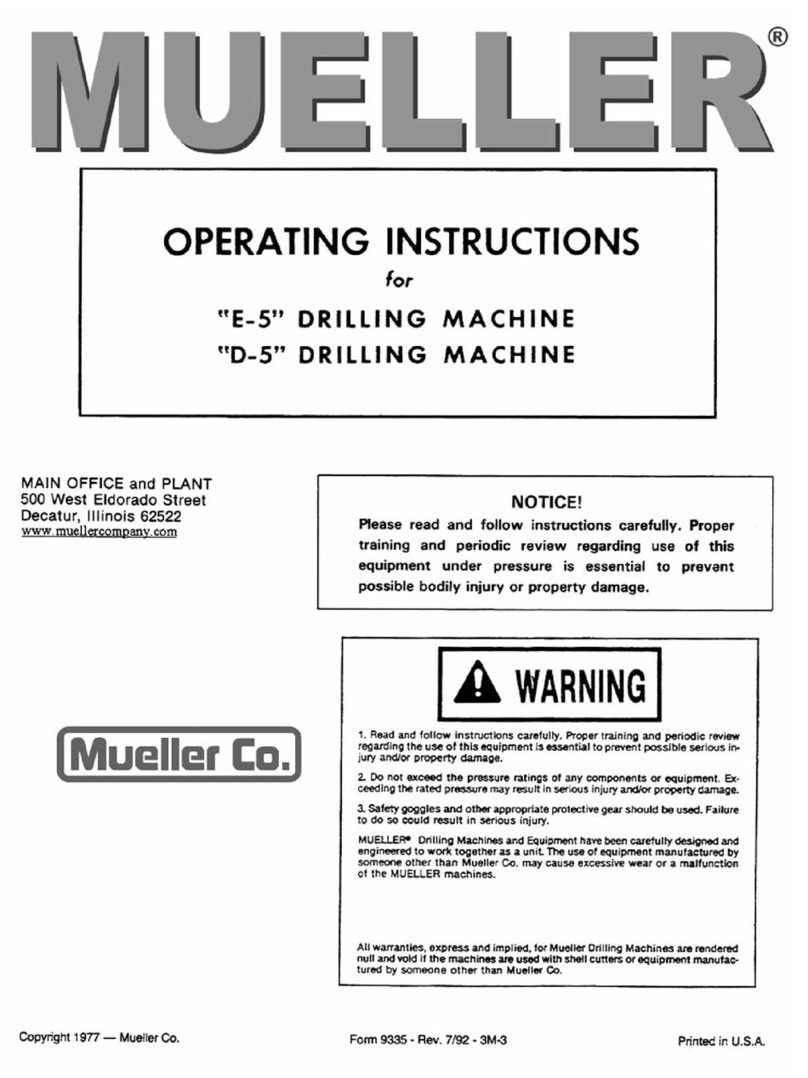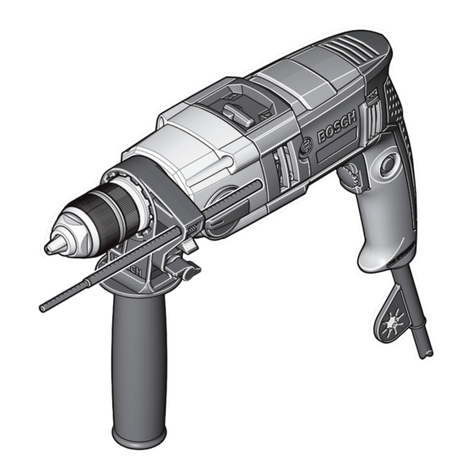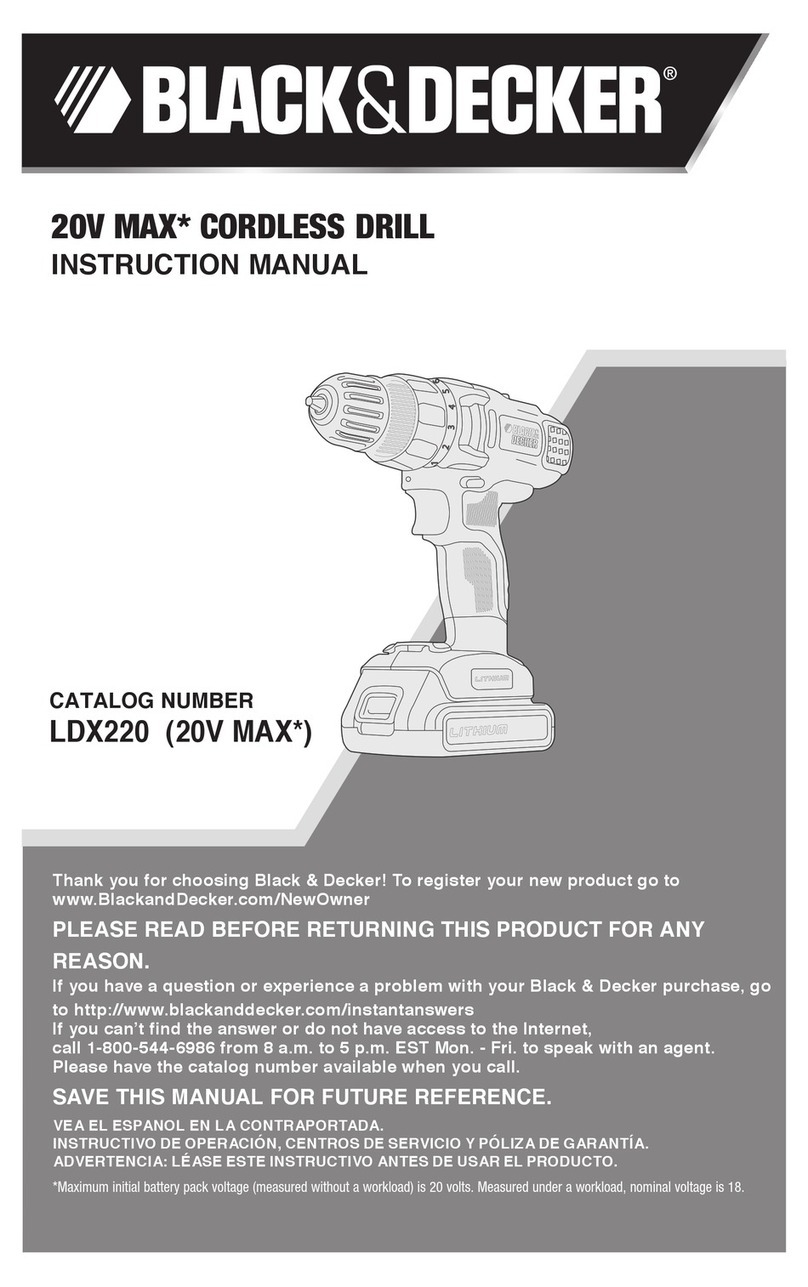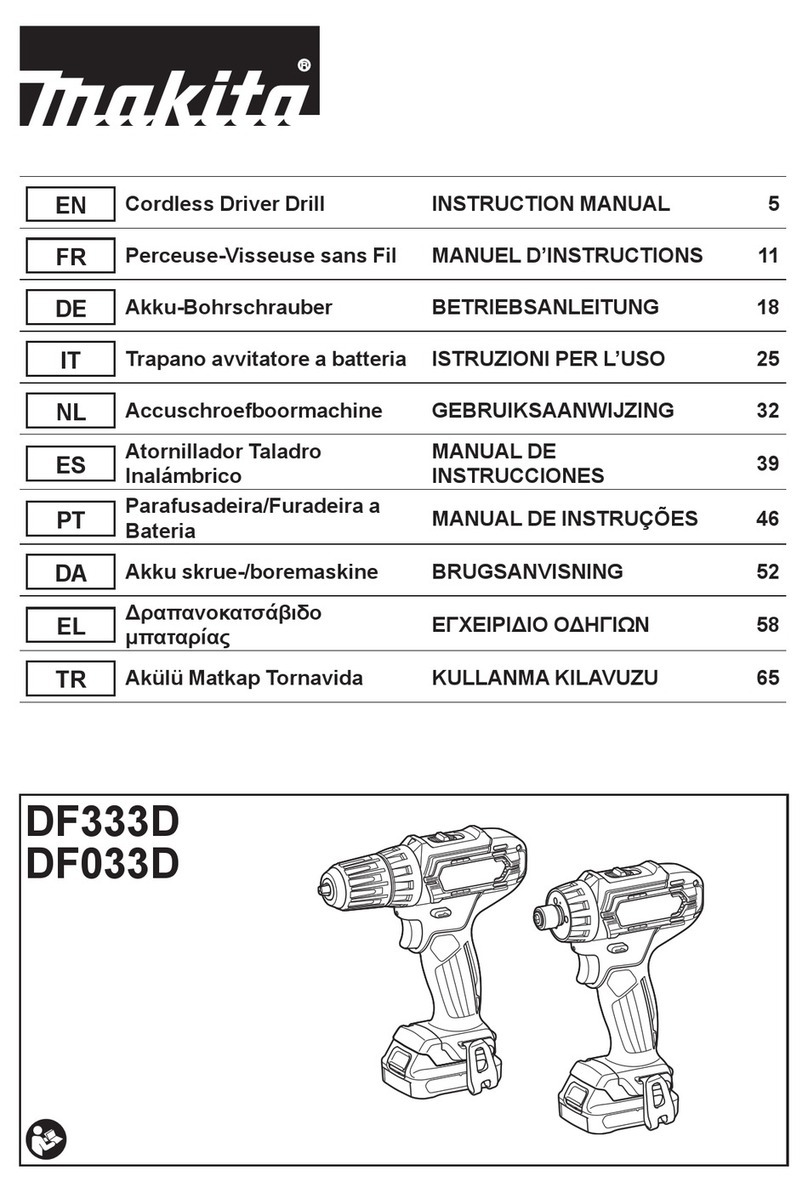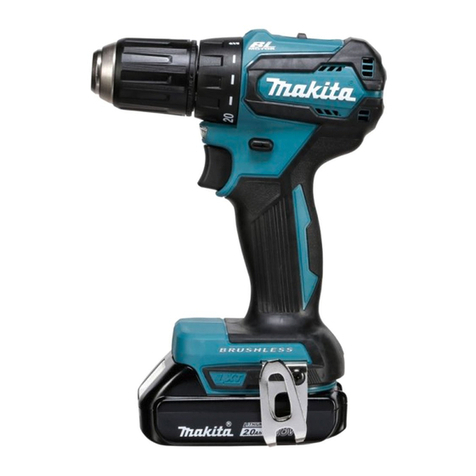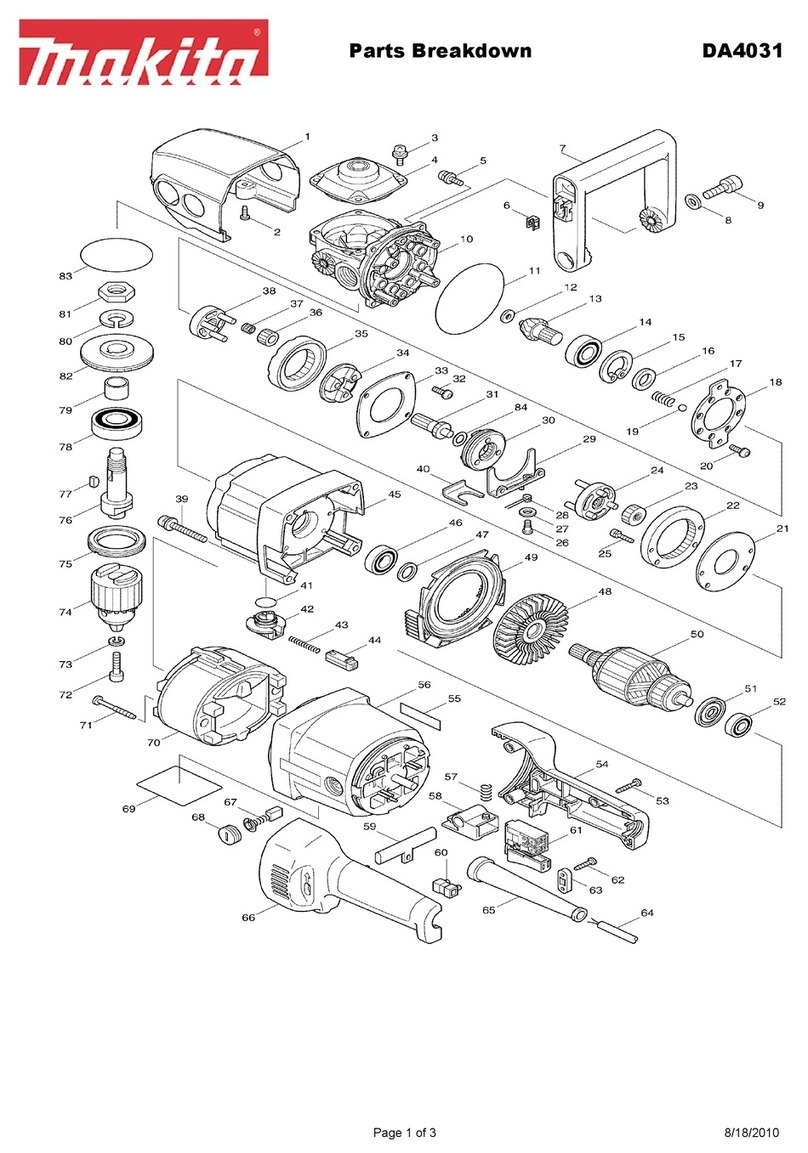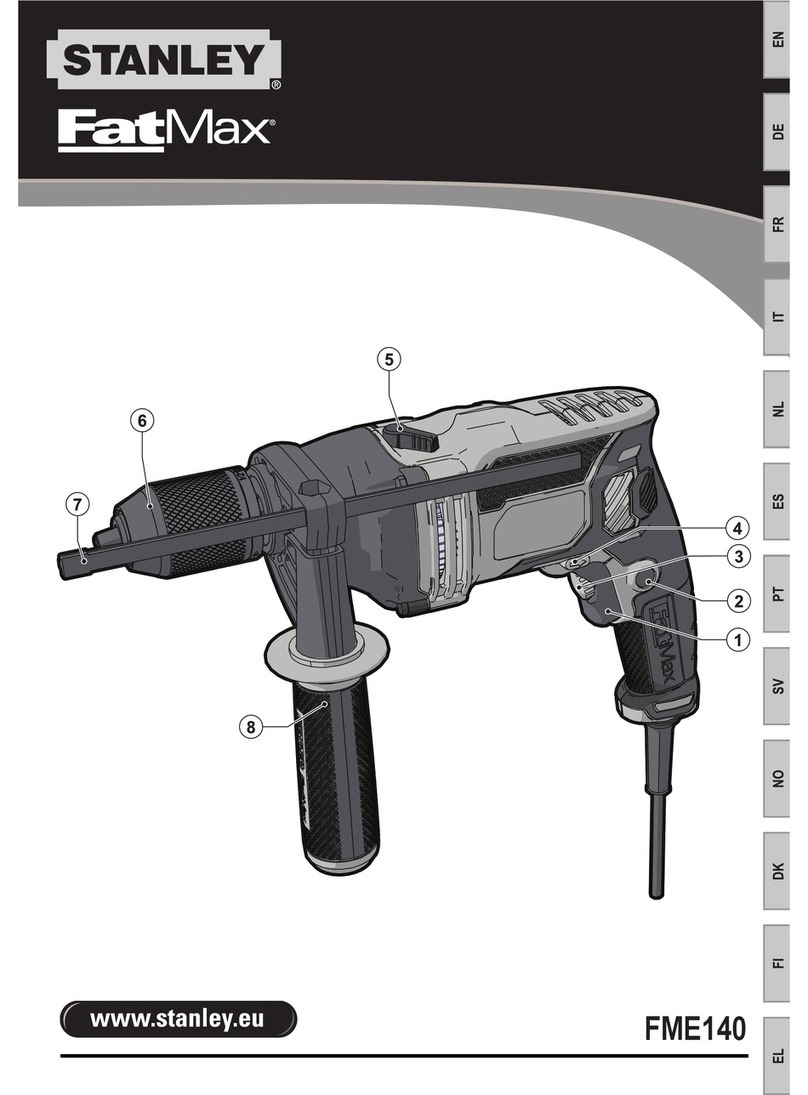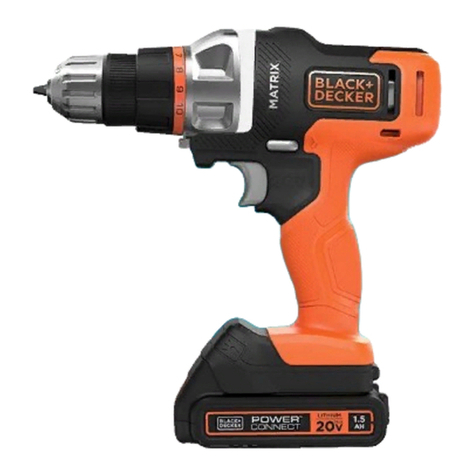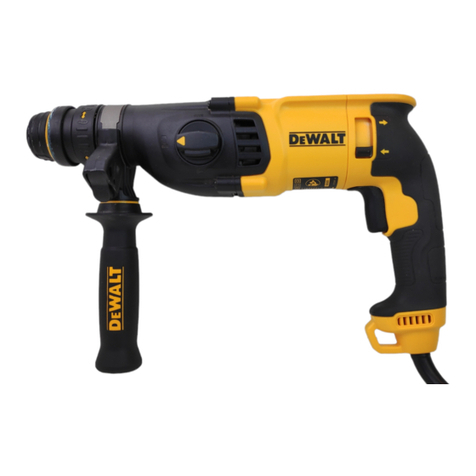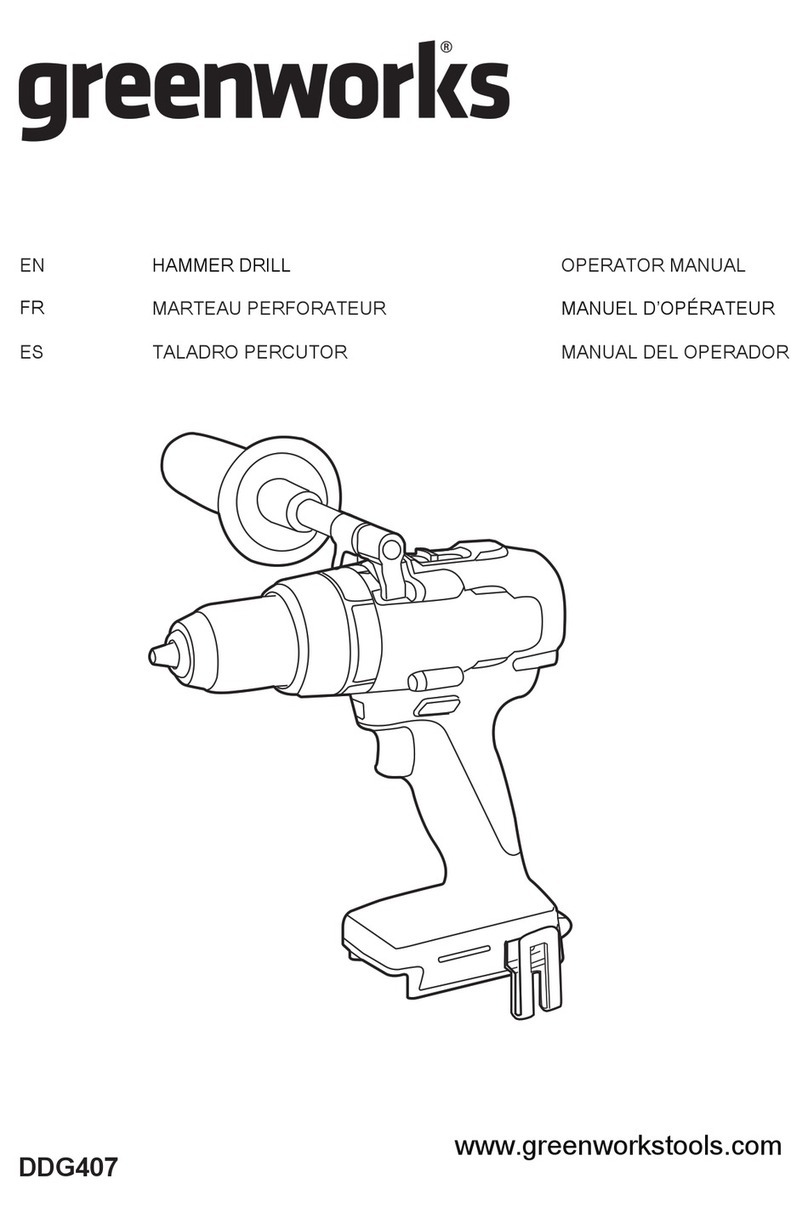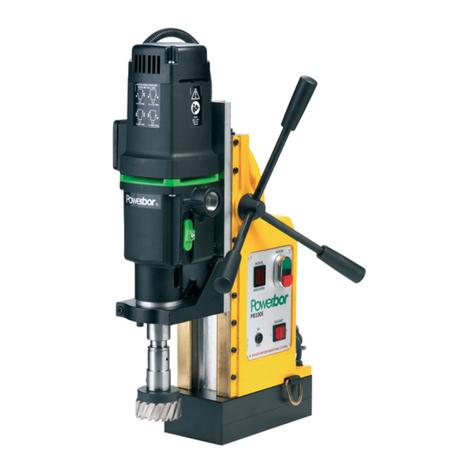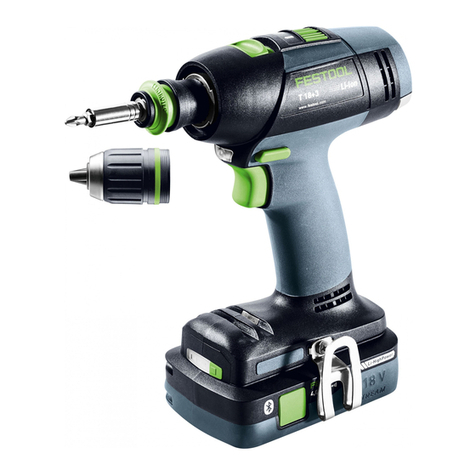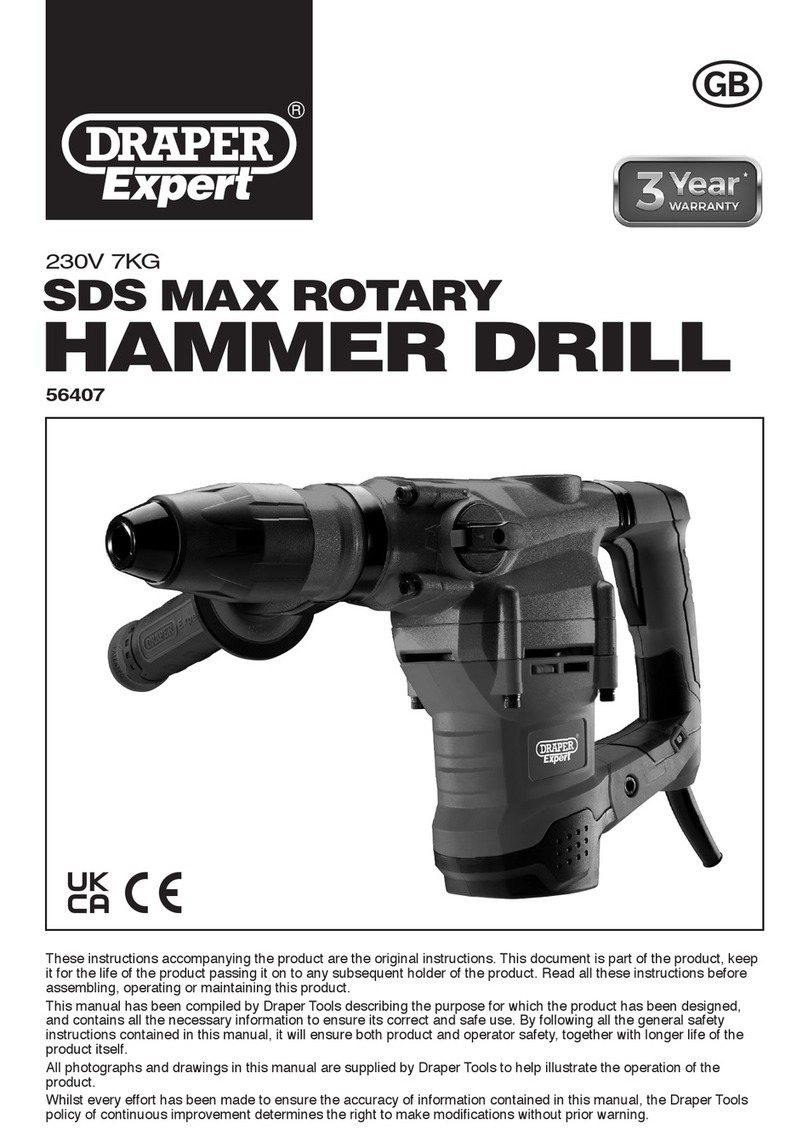
5ENGLISH
Save all warnings and instruc-
tions for future reference.
The term "power tool" in the warnings refers to your
mains-operated(corded)powertoolorbattery-operated
(cordless) power tool.
Hammer drill safety warnings
Safety instructions for all operations
1. Wear ear protectors when impact drilling.
Exposuretonoisecancausehearingloss.
2. Use the auxiliary handle(s). Loss of control can
causepersonalinjury.
3. Hold the power tool by insulated gripping
surfaces, when performing an operation where
the cutting accessory may contact hidden wir-
ing or its own cord. Cutting accessory contacting
a"live"wiremaymakeexposedmetalpartsofthe
power tool "live" and could give the operator an
electric shock.
4. Always be sure you have a rm footing. Be
sure no one is below when using the tool in
high locations.
5. Hold the tool rmly with both hands.
6. Keep hands away from rotating parts.
7. Do not leave the tool running. Operate the tool
only when hand-held.
8. Do not touch the drill bit or the workpiece
immediately after operation; they may be
extremely hot and could burn your skin.
9. Some material contains chemicals which may
be toxic. Take caution to prevent dust inhala-
tion and skin contact. Follow material supplier
safety data.
10. If the drill bit cannot be loosened even you
open the jaws, use pliers to pull it out. In such a
case,pullingoutthedrillbitbyhandmayresultin
injurybyitssharpedge.
Safety instructions when using long drill bits
1. Never operate at higher speed than the max-
imum speed rating of the drill bit. At higher
speeds,thebitislikelytobendifallowedtorotate
freely without contacting the workpiece, resulting
inpersonalinjury.
2. Always start drilling at low speed and with the
bit tip in contact with the workpiece. At higher
speeds,thebitislikelytobendifallowedtorotate
freely without contacting the workpiece, resulting
inpersonalinjury.
3. Apply pressure only in direct line with the bit
and do not apply excessive pressure. Bits can
bendcausingbreakageorlossofcontrol,resulting
inpersonalinjury.
SAVE THESE INSTRUCTIONS.
WARNING: DO NOT let comfort or familiarity
with product (gained from repeated use) replace
strict adherence to safety rules for the subject
product. MISUSE or failure to follow the safety
rules stated in this instruction manual may cause
serious personal injury.
FUNCTIONAL DESCRIPTION
CAUTION: Always be sure that the tool is
switched o and unplugged before adjusting or
checking function on the tool.
Switch action
WARNING: Before plugging in the tool,
always check to see that the switch trigger actu-
ates properly and returns to the "OFF" position
when released.
►Fig.1: 1. Switch trigger 2.Lockbutton
To start the tool, simply pull the switch trigger. Tool
speedisincreasedbyincreasingpressureontheswitch
trigger. Release the switch trigger to stop.
For continuous operation, pull the switch trigger, push in the lock
buttonandthenreleasetheswitchtrigger.Tostopthetoolfrom
the locked position, pull the switch trigger fully, then release it.
CAUTION: Switch can be locked in “ON” posi-
tion for ease of operator comfort during extended
use. Apply caution when locking tool in “ON”
position and maintain rm grasp on tool.
Lighting up the lamp
For model HP1641F
►Fig.2: 1. Switch trigger 2. Lamp
CAUTION: Do not look in the light or see the
source of light directly.
To turn on the lamp, pull the switch trigger. Release the
switchtriggertoturnito.
NOTE: Do not use thinner or gasoline to clean the
lamp. Such solvents may damage it.
NOTE:Useadryclothtowipethedirtothelensof
the lamp. Be careful not to scratch the lens of lamp, or
it may lower the illumination.
Reversing switch action
CAUTION: Always check the direction of
rotation before operation.
NOTICE:
Use the reversing switch only after the
tool comes to a complete stop. Changing the direction
ofrotationbeforethetoolstopsmaydamagethetool.
NOTICE:
When changing the direction of rotation, be
sure to fully set the reversing switch to position (A side)
or (B side). Otherwise, when the switch trigger is pulled,
the motor may not rotate or the tool may not work properly.
►Fig.3: 1. Reversing switch lever
This tool has a reversing switch to change the direc-
tion of rotation. Move the reversing switch lever to the
position (A side) for clockwise rotation or to the posi-
tion (B side) for counterclockwise rotation.
